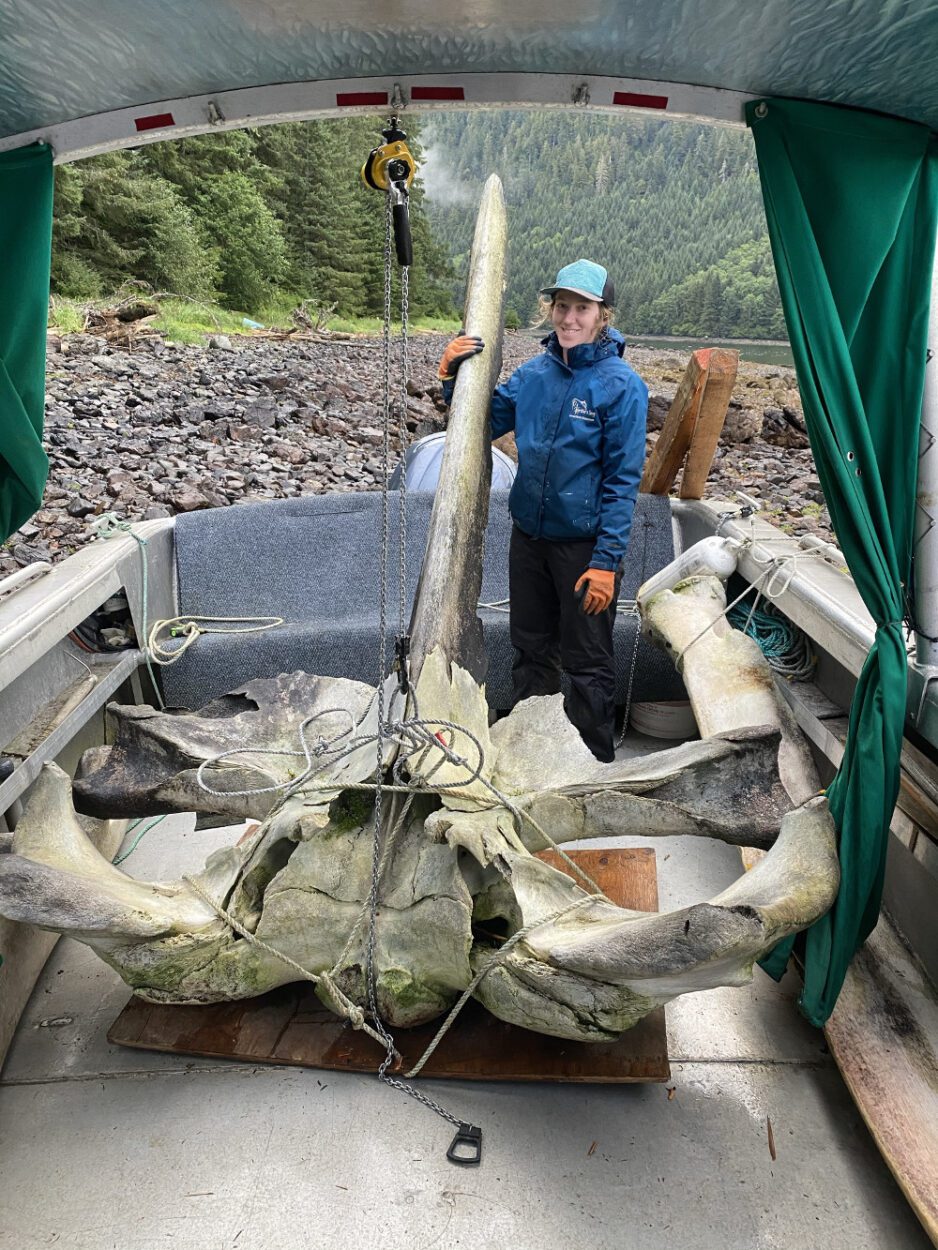
The skull and bones of a humpback whale from Admiralty Island have been brought to Petersburg and could eventually be on display in this community.
Petersburg resident Stephanie Hayes found what she believes are the remains of a young male humpback nearly two years ago in late 2018. It was on the beach at the mouth of Chapin Bay on southern Admiralty Island. Hayes and her husband Josef Quitslund recovered the skeleton on August 20th of this year and brought it to Petersburg.
“People should very cognizant that not only did we go through the proper channels to make sure we could obtain the bones but we also had to do it with some caution because humpback whale bones are incredibly heavy and there was some inherent dangers involved in having to beach our boat overnight actually and take the time to get the bones on and then float off when the tide came back in and big swells came up and it was quite a harrowing experience and I’m just glad that all the bones came back safe but it’s not something I’d recommend other people go and try and do,” Hayes said.
Hayes has a permit from the National Marine Fisheries Service needed to collect or use any bones from the protected species. She’s been talking with the Clausen Museum about an outside display and with Petersburg High School about rearticulating the skeleton as a biology project.
“You know Glacier Bay has a humpback whale skull, Kake has a humpback whale skull and yet here we have the Petersburg Marine Mammal Center and we have quite a lot of tourists coming to whale watch and residents also, yet we don’t have a humpback whale skull or really any bones on proudly display anywhere,” she said. “And I though you know what I have an opportunity to receive a permit and actually get these bones into Petersburg so that hopefully they can be displayed in a way that everyone, the public and tourists can learn from.”
Even though the bones are from a young whale, they’re still large and very heavy. Hayes said the skull is about seven feet wide and nine feet long. Each jaw bone is around 11 feet long. The tissue is gone but the bones are still pretty oily and have a strong smell. It’s not a complete set; some of the humpback’s 161 bones are missing, dragged off by bears or washed away by the sea.
A spokesperson for the National Marine Fisheries Service in Juneau writes in an email that this is believed to be a dead male humpback first observed August 20, 2018 floating in Frederick Sound. That carcass was reported about a week after a state ferry reported a likely fatal impact with a whale. The remains were secured on Brothers Island for a necropsy but broke free and floated away. There’s no timeline yet for when that whale could be displayed.











